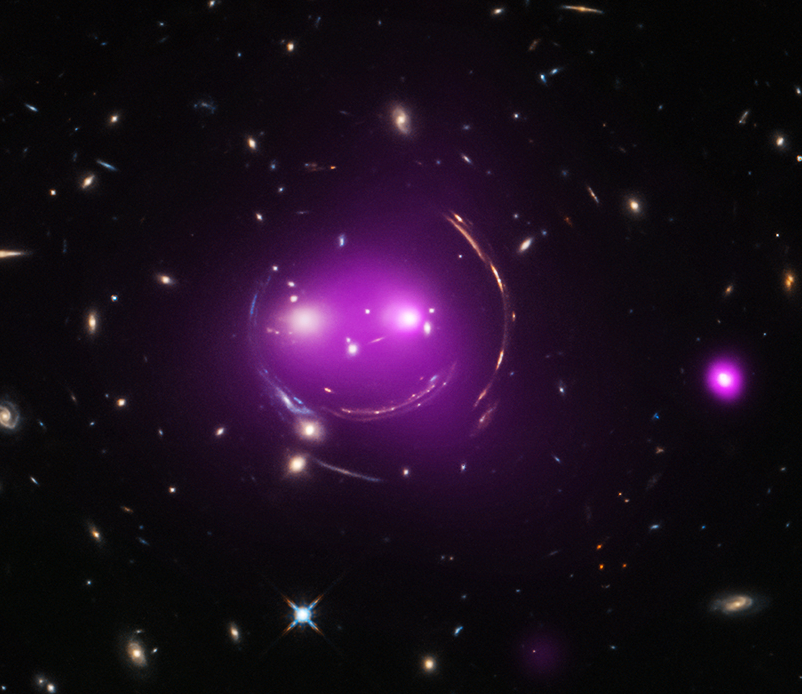
 Credit: X-ray: NASA/CXC/UA/J.Irwin et al; Optical: NASA/STScI
Credit: X-ray: NASA/CXC/UA/J.Irwin et al; Optical: NASA/STScI
Funhouse
A mind-bending implication of the Theory of General Relativity, Einstein's theory of gravity which enjoys its centenary celebration this year, is that matter warps spacetime. Spacetime warping produced by the enormous mass of the Sun accounts for the strange motion of the planet Mercury and the bending of starlight first seen by Sir Arthur Eddington in a classic, world-shaking observation during the solar eclipse of 1919. The image above is a beautiful example of the warping of spacetime by matter. The image shows a composite image of a group of galaxies known as the "Cheshire Cat". An X-ray image, obtained by the Chandra X-ray Observatory, shows in purple X-ray emission from massive clouds of hot gas trapped by the cluster, while an optical image by the Hubble Space Telescope reveals the galaxies in the group and the surrounding field, and something else - strange glowing curves which appear centered on the galaxy group. These curved images are actually the images of normal background galaxies, but the images are bent into long curved shapes as the light passes through the space distorted by the mass of the group of galaxies. This effect is known as gravitational lensing, and is similar to the distortion you'd see by peering into a warped funhouse mirror, or looking up at the omphalos of Cloud Gate.
Published: December 14, 2015
<
HEA Dictionary ● Archive
● Search HEAPOW
● Other Languages
● HEAPOW on Facebook
● Download all Images
● Education ● HEAD
>

Each week the HEASARC
brings you new, exciting and beautiful images from X-ray and Gamma ray
astronomy. Check back each week and be sure to check out the HEAPOW archive!
Page Author: Dr. Michael F. Corcoran
Last modified Tuesday, 27-Feb-2024 10:06:37 EST


